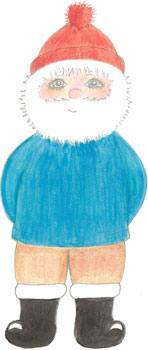
Salty Sam’s Fun Blog for Children
Number 270
The Domesday Book
Hello Everyone

A few weeks ago, Miss Pringle told her class all about a very famous book called the Domesday Book.
Bill, Bob and Emily are all avid readers. That means they read a lot.
They usually all go to the Rocky Bay Children’s Library together every week and if the books they borrow are short ones and they manage to read them quite quickly, they swap books before taking them back to the library the following week.
ln this way, they get to read a lot of books. But they had never heard of this book.
(Of course, they are not going to the library at the moment, but luckily l have lots of books in my lighthouse for them to read!)
By the way, l should say before l continue with my story, that it is pronounced Doomsday Book.
The children asked me if l had a copy of the Domesday Book in my bookcase.
l said no.
l did have an idea about how to make book marks though and we all sat down together and had a crafting afternoon while Bill, Bob and Emily all told me what they had learnt about the Domesday book.
lt really helps you to learn things well when you explain your lessons to someone else.
And so now, l expect you would like me to tell you what this very famous book is all about.
Every school child knows the date 1066. lt is an easy-to-remember date.
After that there were some changes that took place in England.
The Normans that invaded were from Normandy just over the Channel but they were originally Vikings. Vikings liked travelling around a lot.
The new king, William the Conqueror wanted to know everything about his new land and asked for a book to be compiled listing what the country contained.
This of course was a very big job. lt took two years, and the first draft was finished in 1086. William’s men travelled through every shire making sure that they had all the information they could gather from all the towns, villages and solitary houses out in the countryside.
lt contained records of 13,418 settlements in the 40 old counties of the day (the boundaries had been set by the Anglo-Saxons) – some of which still survive.
Some people think that William probably did this so that he could keep a record of how much tax he could collect. This money could be used to fund his army. But historians have looked at the way the information was listed and now think that it is more likely that the king just wanted to know what his newly acquired kingdom contained.
lt was an inventory (list of items) of who owned what down to the last pig. lt was made up of hundreds of pages containing almost one million words and is England’s earliest surviving public record.
The survey was not just a record of all the buildings and the number of people that lived in them but what everyone owned as well.
They tried to list not only all the people they could find but all the horses, cows and pigs as well!
They wanted to know how many ploughs people had. They counted all the markets, mills and fisheries and all the salt pans by the sea (where people made salt from seawater to be used in cooking and also to preserve food to be kept over winter).
They wanted to know in each owned estate (called a manor) or area, who owned the land, how much of it could be used for grazing and how much of it was woodland. They wanted to know how much the estates were worth and how much the value had changed since the new king had taken the throne.
They wanted to know how many people in each area were villagers or cottagers and they wanted to know how many of them were freemen and how many of them were slaves.
The names that appeared in the survey were mostly the men and women who owned land or did especially important jobs like the millers and blacksmiths.
A lot of people were only listed under their Christian names.
Some of William’s followers had been given parcels of land in thanks for their support in battle.
Then all the information was sorted out so that the Domesday Book could be written.
lt was a monumental task and nothing else like it exists from that time in the whole of Europe.
As you can imagine, the people were not very happy about being quizzed about their personal business; especially as they might, as a consequence, be asked to pay more tax or be called for military service.
But the king was keen for everyone to know how efficient his new administration was.
The compilation had a few names – ‘The king’s Book’ and ‘The Book of Winchester’ among them.
But the people nicknamed the compilation the Domesday Book because they likened it to God’s final judgement of people at the ending of the world – when every soul would be assessed and the people had no say in the matter, it was God’s opinion alone that mattered. And the name, which referred to the judgement rather than the end of the world, stuck.
But the work was never completely finished. lt did not contain some major cities like: The City of London, Bristol and Winchester and the lands which are now in the far north of England. (The border between England and Scotland has moved over the years.)
lt did refer to some places that are now in Greater London, however, like places in Middlesex and Surrey and Kent.
The book was left in two volumes. The Great Domesday with the main content from the shires and the Little Domesday containing information about Norfolk, Suffolk and Essex over in the East of England, which was the last area to be surveyed; this was done after William’s death.
The Little Domesday Book contains a lot more detailed information gathered by the king’s men, like the number of goats to be found in the county, and shows how much was probably missed out of the main book when it was written. Only what was considered to be the most important information was included in the writing of the book. lt was written out by six scribes (people who wrote it out by hand).
The books have been rebound on several occasions since, beginning in 1320.
lt was originally kept in Winchester because that was the capital city of England at the time. Then it was taken to Westminster, (which is now in London) probably by King John.
ln the years that followed, the Domesday Book was often used in courts of law by people who wanted a legally-binding document to prove ownership of property.
During the two world wars it was taken out of London to keep it safe.
ln World War l it was locked up in Bodmin Prison in Cornwall and in World War ll it was kept in Shepton Mallet Prison in Somerset.
Over 900 years later, the book still survives and is kept in a specially-made chest at The National Archives in Kew in the west of London. (An archive is a storeroom for documents.) lt is written in Latin and was rebound into five volumes in 1985 to help preserve it.
Even today, historians and archaeologists find information in it useful for their studies because it shows what was in existence at the time.
Most of the book was written by just one person with another adding a few more notes, and some historians believe that perhaps because of ‘human error’ maybe not everything noted was the exact truth.
However, it is still counted as a legal document proving ownership of land even today.
lf you want to look at the contents of the book and see how your town has changed since the late 11th century, the book has been put online – don’t worry, it has been translated into English.
Bye bye everyone – don’t forget to subscribe to my blog!
lf you like my blog, please support it by telling all your friends and followers about it.
Thank you!
And see you again next Fun Friday!
Love and kisses
Salty Sam

www.christina-sinclair.com


Bill and Bob’s Joke of the Week![]()
![]()
Bob: Did you know that Uncle Arthur was killed in the Battle of the Somme in First World War?
Bill: l didn’t even know that he was a soldier.
Bob: He wasn’t, he was camping nearby at the time and went over to complain about the noise!

Salty Sam © Christina Sinclair 2015
Unauthorized use and/or duplication of material from this blog without express and written permission from this blog’s author and owner is strictly prohibited.
Links may be used to www.christina-sinclair.com

Picture Gallery
 A page of the Domesday Book relating to the county of Warwickshire
A page of the Domesday Book relating to the county of Warwickshire
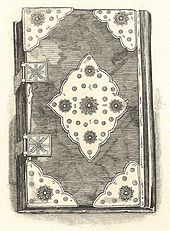 The book in its Tudor cover
The book in its Tudor cover
 Domesday chest made in about 1500 in which Domesday Book
Domesday chest made in about 1500 in which Domesday Book
was kept in the 17th and 18th centuries
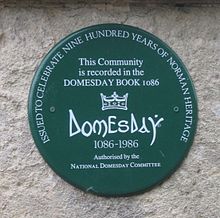 In 1986, memorial plaques were installed in settlements mentioned in Domesday Book
In 1986, memorial plaques were installed in settlements mentioned in Domesday Book


 THE SALTY SAM NEWS DESK
THE SALTY SAM NEWS DESK

For centuries, many people lived in little cottages where the only source of heat was a fire in a hearth place. There would have been a recess in the side of the chimney which would have been in use as a bread oven, and, by the side of the fire, would have been a big pot where bits and pieces were thrown into a stew. People added anything they had to hand.
Auntie Alice made a soup in this way last weekend. She had lots of little odds and ends of vegetables in her fridge and put them all into a saucepan to make a tasty lunch for a chilly day.
Nobody wants to waste food, even today and especially at the moment.
If you would like her recipe, here it is.
Take a large plate of vegetables. The vegetables could be anything like green beans, cauliflower, broccoli and carrots – anything you have left over that needs to be used up or you could buy a packet of mixed vegetables from the supermarket.
Cut the vegetables into tiny chunks, the smaller the pieces, the quicker they will cook.
Put them into a saucepan and cover them with water.
Add to the mixture:
A chopped spring onion
A small potato, diced into small cubes
A stock cube
Salt and pepper
Bring to the boil and then simmer until the vegetables are soft which should take only about ten minutes.
Put all the boiled vegetables into a liquidizer (you can leave them to cool a bit first if you like) and add a can of baked beans.
Whizz up the mixture and return to the saucepan to reheat.
Add a small splash of milk.
This soup will taste of baked beans, so if you are one of those children who hate vegetables but your mum says that you should still eat them, they will be totally hidden!
If you would like to add more depth of flavour to this soup, add any or all of the following:-
With the vegetables:-
A handful of pre-soaked lentils
A clove or two of garlic
Just before serving:-
A topping of grated cheese
A topping of finely chopped herbs
A pinch of chili powder
A pinch of Chinese 5 spice
Stir the soup before serving.
Serve the soup with a slice of lovely, crusty bread and butter.
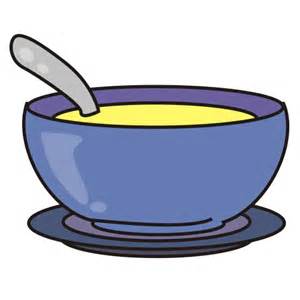

After their lunch yesterday, Bill, Bob and Emily sat down to make up this strange quiz up for you using pictures. We are finding all sorts of things to amuse ourselves out here in the lighthouse!
Think about the sounds of the things rather than the spellings.
Can you work out the names of the countries?
They made so many questions that I am putting the second half of their quiz on next week’s new desk.
1.


2.

3.
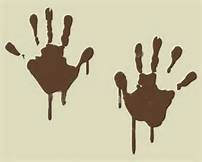
4.
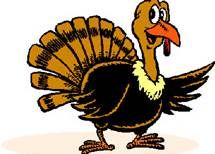
5.
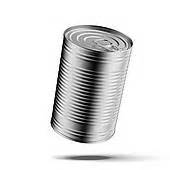
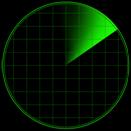
-r
10.

-m
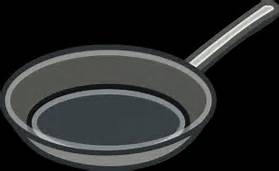
11.



*********************
TO ADVERTISE ON THIS BLOG
PLEASE CONTACT:
christina.sinclair.ads@aol.co.uk
*********************


Hobby Time
And if you would like your own little pig here is a pattern.
This little pig is very cute and quick to make.

EARS (KNlT TWO)
These ears are made in garter stitch
Using 4mm knitting needles and pink dk yarn cast on 2 stitches
Knit 1 row
lncrease 1 stitch at the beginning of the next 2 rows of garter stitch (4 sts)
Knit 1 row
Decrease 1 stitch at the beginning of the next 2 rows of garter stitch (2 sts)
Knit 2 together
Cast off
Fold the diamond you have made over and sew along the two top edges to make triangular ears – leave the ends of the yarn to use to sew the ears onto the head.
PlG SNOUT (KNlT ONE)
Using 4mm knitting needles and pink dk yarn cast on 12 stitches
Cast off
Curl the snout up and sew strip together in a curl as you go
PlG BODY (KNlT ONE)
Using 4mm knitting needles and pink dk yarn cast on 20 stitches
Knit 24 rows of stocking stitch
Don’t cast off – instead run a length of yarn through the stitches so that you can take them off your needle
PlG LEGS (KNlT TWO)
Using 4mm knitting needles and pink dk yarn cast on 10 stitches
Knit 12 rows of stocking stitch
Don’t cast off – instead run a length of yarn through the stitches so that you can take them off your needle
PlG ARMS (KNlT TWO)
Using 4mm knitting needles and pink dk yarn cast on 8 stitches
Knit 8 rows of stocking stitch
Don’t cast off – instead run a length of yarn through the stitches so that you can take them off your needle

TO MAKE UP
- Sew the snout into place at the base of the front of the face and put two nostrils onto the front as two French knots in dark pink yarn
- Sew up the centre back seam of the body right sides together and then turn body right way out
- Sew up the bottom seam wrong sides together
- Sew up the leg inside seams with right sides together
- Turn the legs the right way out and pull in the ends of the feet and slip the yarn up the back seam to the back of the ankle and secure into the back seam
- Bind yarn tightly around the bottom of the legs to make ankles
- Lightly stuff the legs and sew the tops onto the bottom of the body by laying the legs onto the stomach and sewing from behind (place the leg seams facing each other)
- Sew up the under arm seams with right sides together
- Turn the arms the right way out
- Bind yarn tightly around the arms to make wrists in the same way that the ankles were made
- Lightly stuff the arms and sew the tops onto the sides of the body by laying the arms onto the chest and sewing from behind
- Stuff the body, close up the head and take the yarn down the back seam to the neck level and secure into place
- Bind the yarn tightly around the body twice above the arms to make a neck
- Sew the ears into place
- Sew the eyes onto the front of the face using blue dk yarn – make the eyes with French knots (wind the yarn around the needle three times)
- Crochet 10 chains into three strand of yarn and sew this tail into place
- lf you are making your pig into a decoration for a bag or key ring, sew the chain to the top of the head
TlP
When you sew up the seams take the yarn to the outside of the knitting ready to make the ankles, wrists and neck




lt’s the Weekend!

HOW TO MAKE DECORATED BOOK MARKS
There are different ways to make book marks using different materials but whatever you make has to be thin enough to allow your book to shut up without putting strain on the spine.
You can make a book mark out of felt by simply drawing around one end of a ruler. By drawing down one side and then the other your cutting lines should be parallel.
Make your bookmark about half the length of the ruler, so about 15cm or 6 inches.
You could embroider a design onto it but the back of your work needs to be neat because it will show.
Or you could just decorate the end with a pompom or a tassel sewn to a thread or crocheted cord or a string of small beads or a bell.
You can make your own tiny pompom by winding some yarn around the prongs of a fork. Bind the strands together with another length of yarn poked through the centre of the prongs and tied around the centre of the pompom before you slide the pompom off the fork and cut each end.

Or you could tie a tiny toy to the end of a cord attached to the top and let it dangle down at the top of the book.

Or make your own toy animal or character out of felt – use a cookie cutter as a pattern.

Or you could make a book mark out of a piece of card.
Draw a wavy line onto a piece of card and cut along it.
Use this edge to draw a bookworm onto another piece of card. Using a pattern will ensure that the two sides of the worm match.
Draw on a head and tail and colour the bookworm in any way you like.
He can have brightly-coloured spots or stripes or another crazy pattern you make up yourself.
Cut the bookworm out after you have coloured it in.

Or you could draw an animal with a long neck like a giraffe or goose or a dinosaur on a piece of card, colour it in and then cut it out.
The head will poke out of the top of the book.


Please note that the material on this blog is for personal use and for use in classrooms only.
It is a copyright infringement and, therefore, illegal under international law to sell items made with these patterns.
Use of the toys and projects is at your own risk.
©Christina Sinclair Designs 2015


Quick Quiz Answers
- lceland
- Wales
- Greece
- Turkey
- Canada
- Japan
- Estonia

Greece

For an Embroidery Stitches Chart
Check out Blog Post 3

